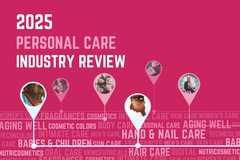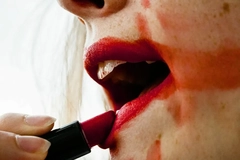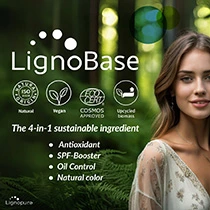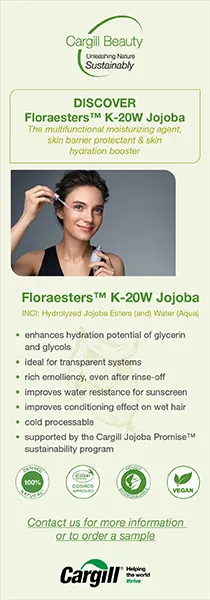The risks in rituals: Rethinking baby skin care for infection prevention

Neonatal sepsis continues to take the lives of newborns, especially in low- and middle-income countries, but there is growing evidence that topical baby skin care products may be part of the solution.
Infant sepsis is a serious bacterial infection in newborns that can spread quickly through the body, leading to organ failure or death if not treated promptly and adequately. It often begins in the first 28 days of life and may show subtle symptoms, like poor feeding or fever.
In many countries, traditional newborn care practices still guide how families care for fragile skin, but some of these customs may inadvertently increase infection risks.
While diagnostic tools and antibiotic access remain essential, public health experts and industry leaders increasingly view the skin barrier as more than a surface to cleanse but as a critical line of defense.
The World Health Organization (WHO) has released a report outlining the need for affordable, accessible diagnostic tools to detect serious bacterial infections among newborns aged 0–59 days. Sepsis alone accounts for 15% of neonatal deaths, with the burden falling disproportionately on low-income countries.
The WHO report stresses that 84% of infection-related newborn deaths are potentially preventable with early diagnosis and management, but many countries’ health systems lack the infrastructure to act quickly. The report also notes that prolonged or unnecessary hospitalization can increase the risk of health care-associated infections, further complicating outcomes for vulnerable infants.
Personal Care Insights speaks with Kenvue and the WHO about the possible role of baby care in addressing these gaps, notably to support the skin barrier and reduce infection risk outside of clinical settings.
Strengthening the barrier
The potential for skin care to reduce infection risk is already backed by clinical evidence, says
Kenvue, the maker of Johnson’s Baby, and a major player in infant skin care science.
Kenvue cites a previous study by researchers at the Johns Hopkins Bloomberg School of Public Health and published in The Lancet. It demonstrated that topical application of emollients that augment skin barrier function resulted in a 26-32% reduction in mortality rates, compared with infants not receiving topical emollient therapy.
.jpg) In many low-resource settings, traditional newborn care practices can unintentionally increase infection risks.“We know that the newborn skin barrier is still developing at birth, and it is vulnerable to environmental stressors such as alterations in temperature and humidity, exposure to irritants, allergens, and potentially pathogenic bacteria,” says a Kenvue spokesperson.
In many low-resource settings, traditional newborn care practices can unintentionally increase infection risks.“We know that the newborn skin barrier is still developing at birth, and it is vulnerable to environmental stressors such as alterations in temperature and humidity, exposure to irritants, allergens, and potentially pathogenic bacteria,” says a Kenvue spokesperson.
As the vernix — the natural, waxy protective layer that coats newborns in the womb — gradually wears off after birth, the infant’s skin becomes more exposed and vulnerable to external threats.
This is especially concerning in resource-limited environments, where access to clean water for bathing, sterile materials for skin care, or timely diagnosis and treatment of infections may be limited.
“WHO recognizes that neonatal skin, especially in preterm and low birth weight infants, is highly permeable and vulnerable to infection,” says WHO, adding that exploring supportive skin care approaches, such as products that strengthen the skin barrier, could offer protection alongside medical care.
When compromised, the skin barrier can allow colonization and deeper spread of pathogens.
The Bloomberg School of Public Health study also found that preterm infants in Bangladesh who received topical application of sunflower seed oil were 41% less likely to develop hospital-acquired infections than those who received no treatment.
The researchers concluded that the low cost, simplicity, and safety of such emollient therapy make it a valuable intervention for infants in some countries.
Tradition weighs in
In many low-resource settings, caring for a newborn’s skin, especially the umbilical area, is deeply influenced by cultural tradition. What families consider essential newborn care can differ from medical guidelines, and in some cases, these traditional practices may unintentionally raise the risk of infection.
This conflict between cultural norms and evidence-based care is particularly stark regarding the umbilical cord. In rural parts of Africa, caregivers often apply substances like ash, dirt, mud, animal dung, toothpaste, spit, or spirits to the umbilical cord to help it heal or protect the baby.
.jpg) The newborn skin barrier is still developing at birth and is vulnerable to environmental stressors.While these practices are rooted in tradition, they can inadvertently introduce harmful bacteria into an open wound at a critical stage of development.
The newborn skin barrier is still developing at birth and is vulnerable to environmental stressors.While these practices are rooted in tradition, they can inadvertently introduce harmful bacteria into an open wound at a critical stage of development.
Strong irritants such as ground red pepper have also been reported as part of home-based umbilical skin care in some parts of Africa. Clinical documentation has linked the practice to severe infections, including umbilical sepsis, necrosis, and systemic complications.
Another widespread cultural practice is the application of salt to a newborn’s skin, often within the first 24 hours after birth. In communities across India, Uganda, Pakistan, Nigeria, Benin, and parts of eastern Turkey, caregivers believe salting helps strengthen the baby, prevent body odor later in life, or purify the skin.
However, researchers from Canakkale Onsekiz Mart University, Turkey, warn that “salting causes irritation on the baby’s skin, pain, redness, loss of fluid from the body and the development of infection in the baby.”
Spreading awareness
Some companies are working to disseminate safer, evidence-based skin care routines globally to address the gap between cultural practice and clinical safety.
“As part of our commitment to advancing evidence-based skin care for neonates and infants, Kenvue has supported development of independent guidelines through educational grants, including the Neonatal Skincare Guidelines developed by the Association of Women’s Health Obstetric and Neonatal Nurses,” a Kenvue spokesperson tells us.
The guidelines were first developed in 2001. Since then, they have been updated three times and translated into multiple languages.
“These guidelines are applicable to both low- and high-resource settings, and include recommendations for assessment of the skin for potential breakdown, appropriate hygiene including cleansing and moisturization, cord care, and infection control.”
Kenvue has also invested in developing and supporting evidence-based skin care guidelines in partnership with organizations in Brazil and India.












